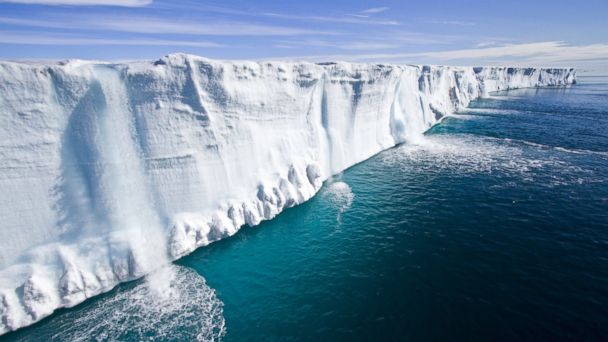Climate Change Is Here Now, Says UN Report
It's not the future: It's here now.
Lower Manhattan underwater from rising seas during hurricane Sandy; wildfires - many more of them like the one in Colorado; droughts in the American West; and wicked hurricanes and typhoons like Haiyan, the one in the Philippines last year: All these, according to a new report from the UN's climate panel released today, are signs of the impact of climate change.
"We are experiencing the impact here and now; Global warming is occurring," Noah Diffenbaugh, associate professor Stanford University and coauthor of the report told ABC News. "The impact of global warming is already being felt. It is being felt across the continents; they are being felt in the ocean. This is not just about the risk of climate change a century from now but it's really about managing the risk of the current climate."
And while global warming is easiest to see at the poles, with ice caps being drastically reduced over the past 10 years, this new report by a United Nations sanctioned science panel says there is no more debate: Global warming is real, here now, wreaking havoc worldwide and caused by humans.
The first sentence of the report lays it pretty simply: "Human interference with the climate system is occurring, and climate change poses risks for human and natural systems."
Last year alone, the U.S. suffered seven weather disaster events, costing the country $7 billion and 109 lives, according to the National Oceanic and Atmospheric Administration.
"We have very clear observations of global warming, we know it is happening. We also know that is not consistent with the natural variations in the climate system," Diffenbaugh said. "It is consistent with human activity, particularly the emissions of greenhouse gases to the atmosphere."

(Michael S. Nolan/Getty Images/age fotostock RM)
While those living in the northeast corridor of the United States might find it hard to believe after a winter with record snowfall, around the world 2013 was one of the warmest years on record.
"It's very easy to look outside one's doorway and draw conclusions about whether the temperature is going up or down," Diffenbaugh said. "The reality is that globally, 2013 was one of the hottest years on record, and the winter of 2014, while it was extremely cold in parts of the United States, it was actually one of the warmest Januaries on record."
According to NOAA, Anchorage, Alaska's above average January temperature of 29.4 degrees F was slightly warmer than the below average temperatures seen in Philadelphia (28°) and New York City (29 ºF).
And what the current and future global warming means is real risk of climate extremes impacting lives, livelihoods, security, and crops.
"It's very likely that if global warming continues along the current pathway, that we are likely to see more of the extreme heat that can be damaging to crops in the United States. In terms of water supply; we now know that further global warming is likely to increase how many extremely low snow years we experience in the western United States - this has important impacts for water supply in the western united states; When we look at sea level over the coming decade, this suggests we are likely to see increased risk of extremely strong storm surges in land falling storms and extremely large flooding events."
The good news is, if we caused it, the report says, we can fix it. In fact, fossil fuel use is dropping in the United States, but unfortunately China and India more than make up for the difference.
"There are a lots of ways I know I can improve how much I am impacting the climate system, certainly the air travel, whether or not I leave my lights on, whether or not I ride my bike or take a short trip in the car, I know that all of these activities that I engage in end up contributing CO2 to the atmosphere and when we add all that up all over the world, that is what's causing the global warming that we are very clearly observing," Diffenbaugh said.